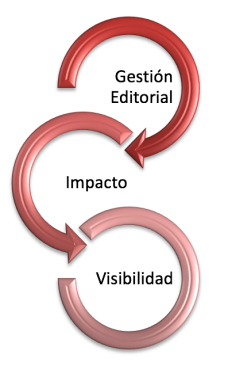Author: Rosa García-Ruiz – Translation: Erika-Lucia Gonzalez-Carrion
The quality of a journal depends on three fundamental factors: editorial management, the impact and visibility of its publications. The most prestigious scientific journals in any area of knowledge constantly work to improve in these three aspects, in addition to other criteria already mentioned in the previous post “Quality criteria in the publications”, and in a very special way to maximize its visibility, which implies that the journal will be positioned in the best databases and its articles will be visible to researchers and potential authors around the world.

For an author it is essential to identify those journals that are located in indexed databases, selective newspaper archives, selective catalogs or university libraries. Therefore, when selecting the journal to which you want to send a manuscript, in addition to taking into account the advice already published in this blog on choosing a publication of quality, the author should check in which databases that journal is ranked, since to bet for a visible magazine supposes that our article will be visible for the researchers of the area and evidently, it will favor that it is cited in the next publications.
When an author decides that Comunicar can be the journal to send his or her best manuscript, the autor can check, in the tab “Indexations” where it is located, and as a consequence, check the journal’s ability to become known in the academic and scientific field its research work. Comunicar is present in 650 databases, grouped in the following categories:
- Selective international databases
- Journal evaluation platforms
- Selective directories
- Selective newspaper libraries
- Specialized websites
- Searchers of scientific literature open Access
- Libraries catalogs
- Social networks
- Catalogs of university libraries
As can be seen, there are different databases in which a journal can be indexed, and in this sense, they can be categorized in order of relevance. In this way, we can consider as more important and prestigious databases those that index journals taking into account different variables related to the impact of the journal, for which they are given a relative quality index within the journal’s set of the same category. A clear example of these databases are Scopus or the Web of Science.
Other databases take into account the editorial value of the journal, as is the case of Latindex, which establishes a series of criteria to be fulfilled, linked to the editorial quality of the journals, and not to the impact of the published articles. Others take into account the criteria of the experts in the scientific field to which the journal is linked.
The prestigious scientific journals, therefore, are recognized by their position in the data bases, which suppose an effort of permanent update to the editorial teams that, repercutes as well in the visibility of each one of the articles that publish. Therefore, authors should spend time searching for this information in each journal to which they wish to send their articles.
